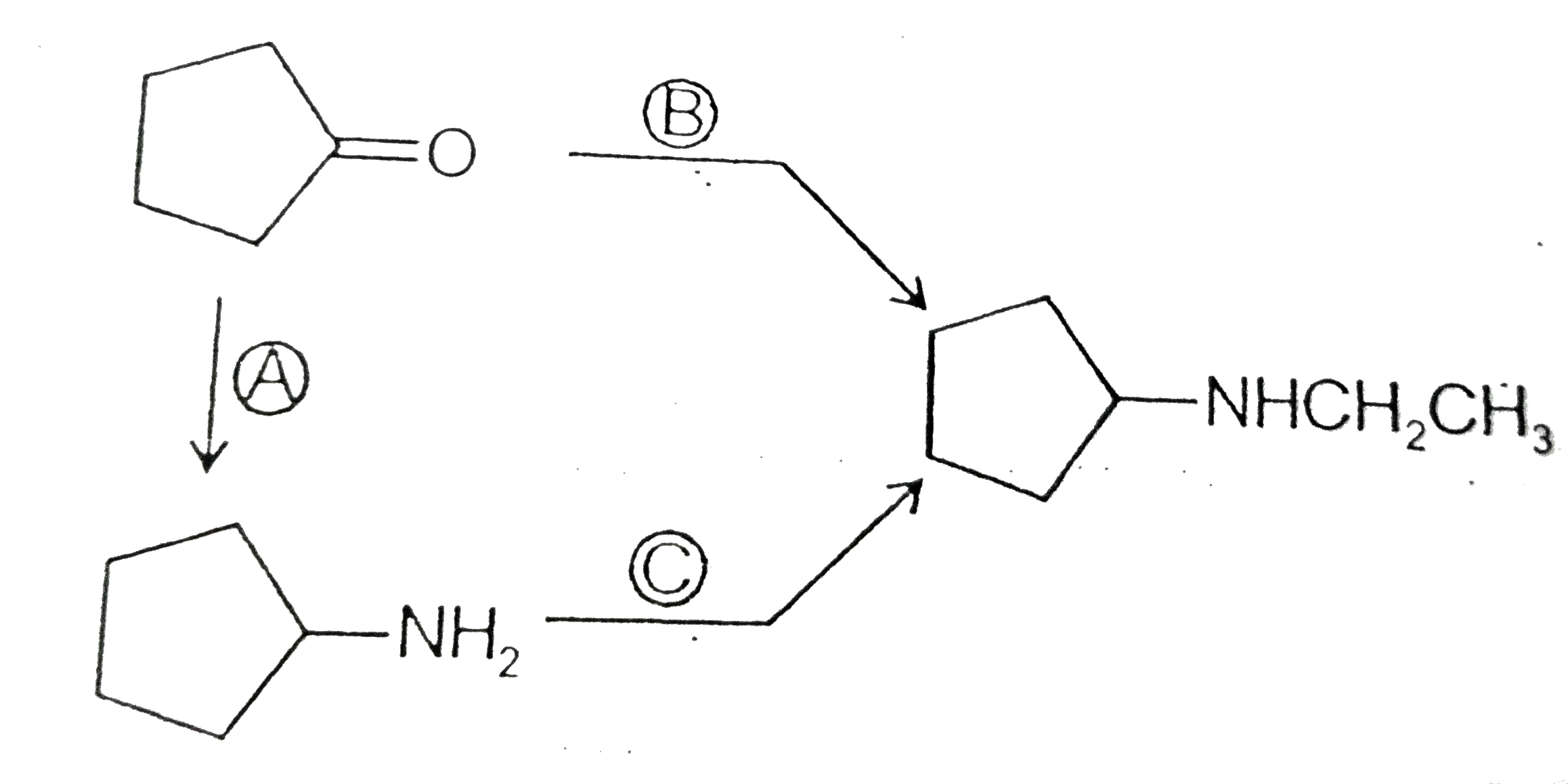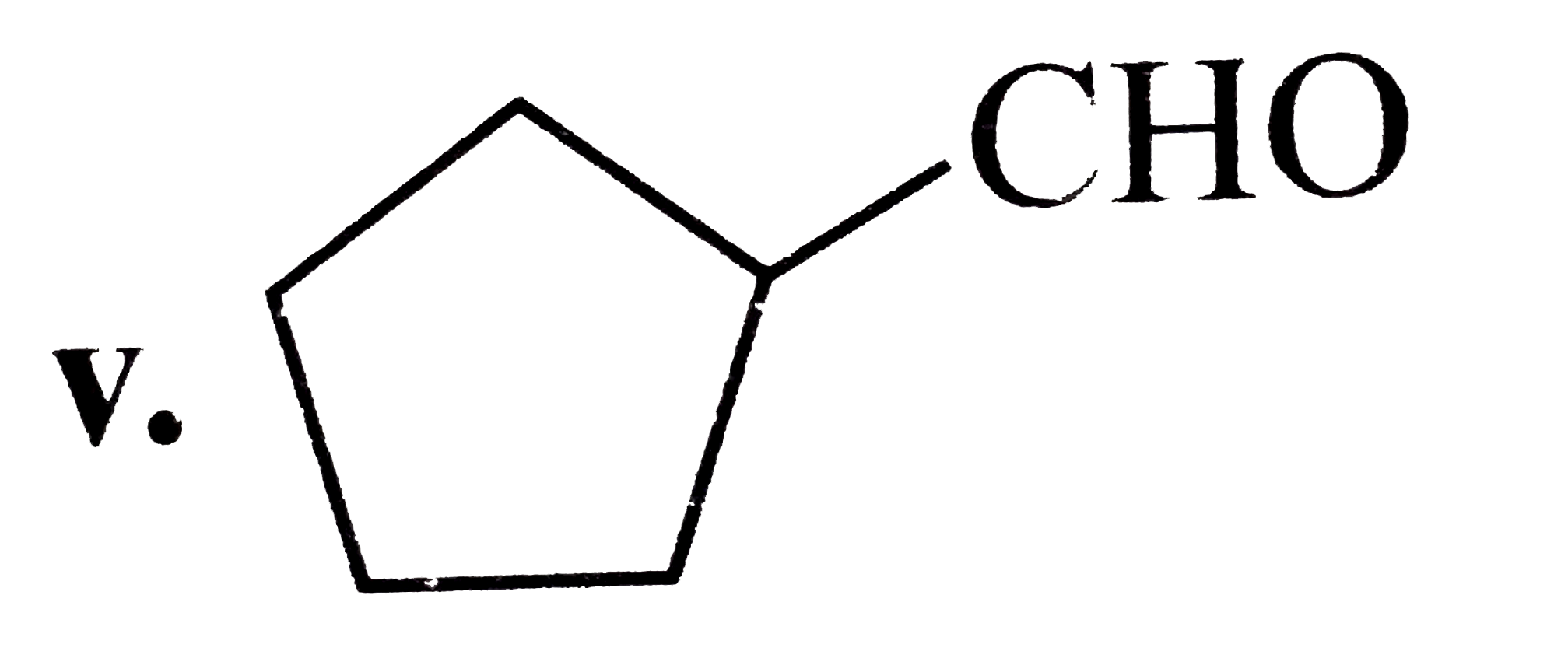Starting from appropriate alkyl halide and aldehyde/ketone suggest synthesis of following alcohols. Wherever possible suggest more than one combinations.
i. Isobutyl alcohol can be prepared as follows:a. Isobutyl bromide on heating with dilute KOH gives isobutyl alcohol.b. Isobutyl alcohol is prepared by hydrogenation of isobutyraldehyde using nickel as a catalyst at 413 K.c. Isobutyl alcohol is prepared by reduction of isobutyraldehyde using sodium amalgam in water.b. Neopentyl alcohol is prepared by hydrogenation of 2 2 dimethylpropanal using nickel as a catalyst at 413 K.c. Neopentyl alcohol is prepared by reduction of 2 2-dimethylpropanal using sodium amalgam in water.iii. Pentan-2-ol can be prepared as follows:a. 2-Bromopentane on heating with aqueous potassium hydroxide gives pentan-2-ol.iv. 3-Methylpentan-3-ol can be prepared as follows: a. 3-Bromo-3-methylpentane on heating with aqueous KOH gives 3-Methylpentan-3-ol.b. Diethyl ketone on treatment with methyl magnesium iodide forms complex which on acid hydrolysis gives 3-Methylpentan-3-ol.
Related Solutions
Oxidation OF Alkenes by Per-acid, Oxidation OF Alkyl Halide to Aldehyde and Ketone, Oxidation OF Alcohol by Strong and Mild Oxidising Agent
View SolutionSuggest a combination of organic halide and cuprate regent appropriate for the prepane of each of the following compounds :
(a) 2- methybutane (B) i- ButylcyclohexeneView SolutionIn Williamson synthesis if tertiary alkyl halide is used than
View SolutionSuggest a synthesis of given product from the indicated starting material.
 View Solution
View Solutiona. How will you convert an alkyl halide to a primary amine whose molecule has one carbon atom more than the used alkyl halide molecule?
b. Why are amines more basic than the comparable alcohols.View Solution(a) How will you convert an alkyl halide to a primary amine whose molecule has one more carbon atom than the used alkyl halide molecule ? (b) Why are amines more basic than the comparable alcohols ?
View SolutionWhich one of the following is NOT used to prepare alkyl halide from an alcohol?
View SolutionConsider the following reactions and answer A and B .

Suggest a reagent appropriate step(a) the synthesis .View SolutionThe yield of ketone when a secondary alcohol is oxidised is more than the yeild of aldehyde when a primary alcohol is oxidised.
View SolutionThe yield of ketone when a secondary alcohol is oxidised is more than the yield of aldehyde when a primary alcohol is oxidised.
View SolutionThe yield of ketone when a secondary alcohol is oxidised is more than the yeild of aldehyde when a primary alcohol is oxidised.
View Solutionनिम्नलिखित से ऐल्कॉहॉल्स की प्राप्ति किस पाकर संभव है?
(a) हैलो एल्केन्स से
(b) ऐल्डिहाइड्स व कीटोन्स से।View Solutionनिम्न में कैसे प्राप्त करेंगे?-
(a) एल्कोहोल से एल्किल हैंलाइडView SolutionWrite the IUPAC names of the following ketones and aldehydes. Wherever possible, give also common names.
View SolutionWrite the IUPAC names of the following ketones and aldehydes. Wherever possible, give also common names.
View SolutionWrite the IUPAC names of the following ketones and aldehydes. Wherever possible, give also common names.
View SolutionWrite the IUPAC names of the following ketones and aldehydes. Wherever possible, give also common names.
 View Solution
View SolutionWrite the IUPAC names of following ketones and aldehydes. Wherever possible, give common nemes also.
i.
ii.
iii.
iv.
v.
vi.View SolutionWrite the IUPAC names of the following ketones and aldehydes. Wherever possible, give also common names.
 View Solution
View SolutionWrite the IUPAC names of the following ketones and aldehydes. Wherever possible, give also common names.
 View Solution
View Solution
